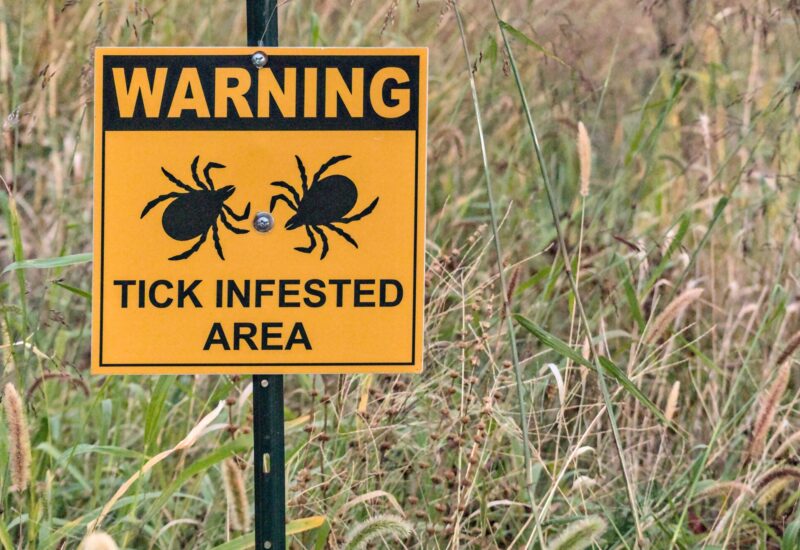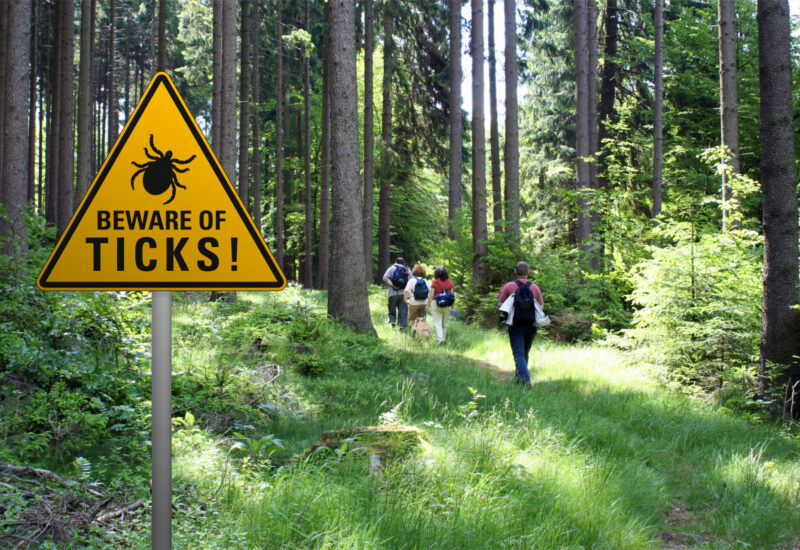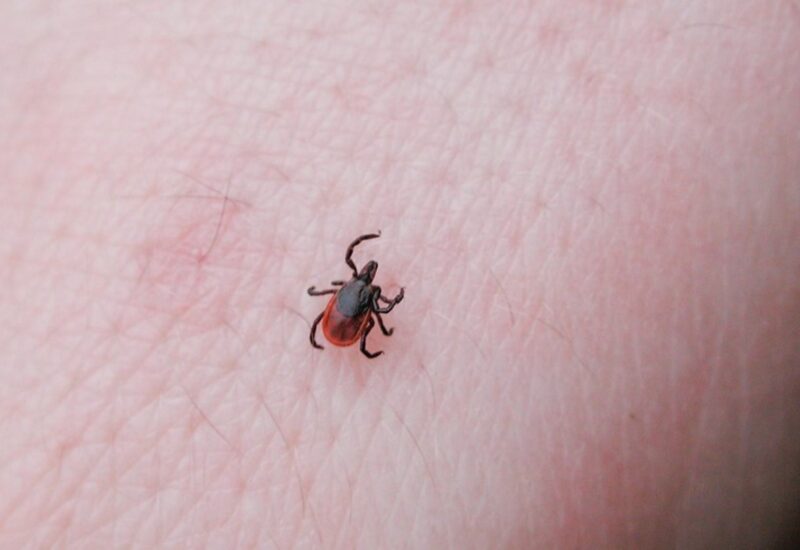Fall Tick Tips

Simple Tips to Remove a Tick That Can Potentially Save Your Life
Fall brings with it the beautiful colors of changing foliage. It also brings with it the never-ending leaf debris. Many of us spend hours in our yards raking, using the leaf blower and collecting leaf litter in bags to be left on the curb. This may seem like a harmless chore, but leaf debris provides excellent shelter for ticks to lay eggs, while creating the perfect opportunity for a tick to dig its little mouthparts into you.
How to Remove a Tick
- What should you do if you find one of these blood-sucking critters on you? Here are the best practices as recommended by the Center for Disease Control and Prevention.
- Always remove a tick as quickly as possible.
- Use a fine-tipped tweezers to grasp the tick close to the skin’s surface.
- Pull upward with steady, even pressure. Don’t twist or jerk the tick; this can cause the mouthparts to break off and remain in the skin. If this happens, remove the mouthparts with sterilized tweezers. If you are unable to remove the mouthparts easily, leave it alone and let the skin heal.
- After removing the tick, thoroughly clean the bite area and your hands with rubbing alcohol, an iodine scrub, or soap and warm water.
- If you’re not comfortable removing the tick, seek the help of a doctor.
Tick-Removal Myths
There are many myths about how to remove a tick and most, if not all, are incorrect. Removing this insect the wrong way can lead to more serious issues like contracting a tick-borne disease such as Lyme. Do not use nail polish, petroleum jelly, or heat to remove the tick. Do not grab and squeeze the tick with your fingers, this will push the contaminated fluids from the tick into your body. Do not let the tick detach on its own. If you develop a rash or fever in the weeks after you’ve been bitten, seek medical help immediately. Always give your doctor as much information as possible about when you found the tick and how you removed it.
Protect Yourself From Ticks
Wear pants, tall socks and long sleeves when clearing leaf debris or spending time in the woods. Spray yourself with insect repellent that contains DEET. Steer clear of tall grasses as ticks climb the grass and hitch a ride on you when you brush past. Always check for ticks after spending time outside, you can never be too careful!
We hope you find these tips helpful. Catseye Pest Control also offers Tick Treatment Services to protect your family, pets and property from ticks. If you’d like to learn more about this service contact us today!






